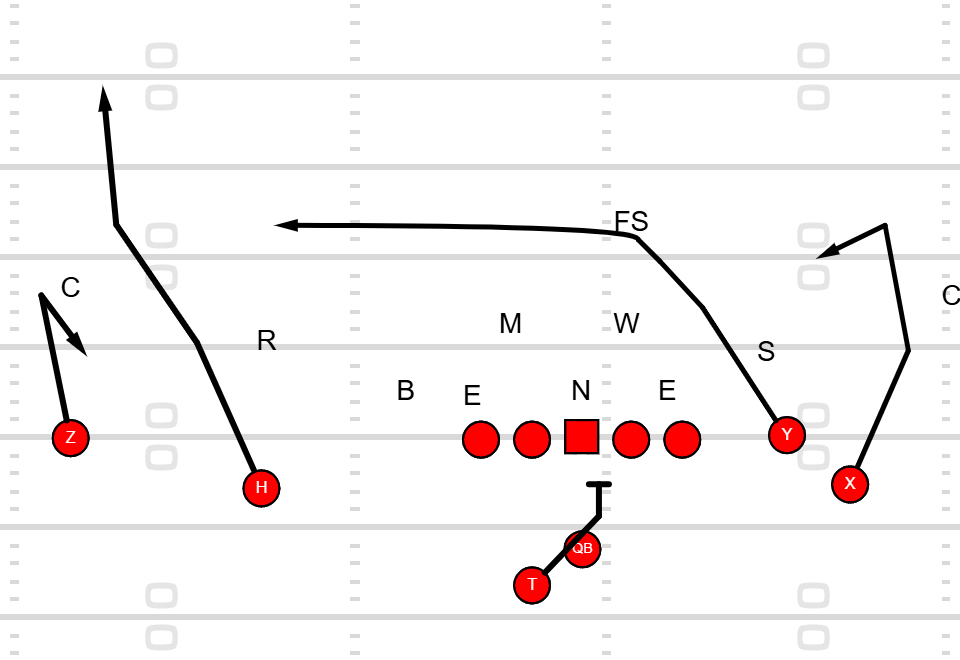Ole' Miss Y-Cross
Breaking down the Rebels’ most effective passing concept.
Charlie Weis Jr’s Ole Miss Rebels offense torched defenses in 2024.
Finishing second in the nation in passing yards and total offense, the Rebels put together one of the most explosive seasons in college football.
Beyond their tempo and aggressive play-calling, one concept stood out as the backbone of their passing attack: Y-Cross.
A staple of Air Raid principles, Y-Cross allows Ole Miss to attack defenses horizontally and vertically. The Rebels used their variations, different formations, and frontside routes to create explosive plays.
In this breakdown, we’ll dive into how Ole Miss used Y-Cross. You’ll see how they used it from spread sets, bunched formations, and play-action.
Let’s Dive in.
Y-Cross Refresh
At its core, Y-Cross is a weak-side flood concept designed to stretch defenses both vertically and horizontally. The structure is simple:
One deep route (typically a go, post)
One intermediate route (the Y-Cross itself)
One short route (usually a check-down or flat route)
This creates a natural high/low read for the quarterback, who typically progresses from the deepest route to the shortest route.
If the defense overcommits to stopping the weak-side flood, teams often pair Y-Cross with a curl-flat concept to the backside, giving the QB a secondary option. This creates a stretch on the backside flat defender.
Now, let’s look at how Ole Miss tailored Y-Cross to their high-octane offense.
Slot-Fade Y-Cross
Keep reading with a 7-day free trial
Subscribe to Coaching Football Insights to keep reading this post and get 7 days of free access to the full post archives.





